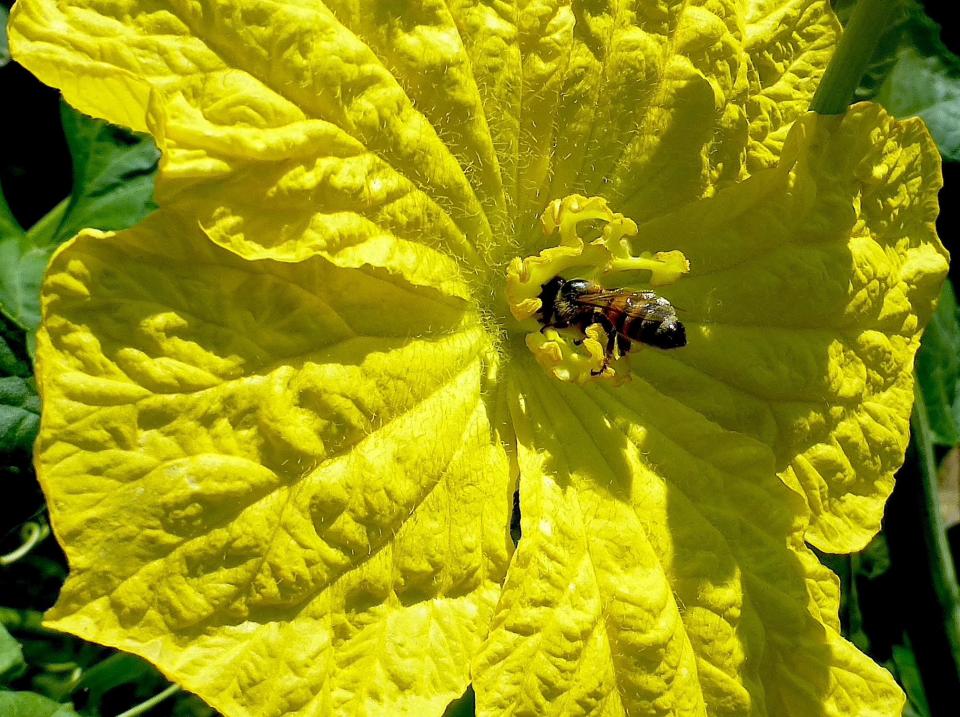Gardening for You: Queen bees rule the hive
Last week’s column (March 22, AJ’s Gardening for You) briefly explored the critical importance of honey bees to the foods we rely on for healthy and varied nourishment. Honey bees are the link between us and more than 71 food crops we have come to expect on the grocer’s shelves – nuts, fruits, and vegetables (usda.gov).

The Varroa mite, an endangering pest to honey bee colony survival, was introduced in last week’s column. The tiny parasitic Varroa mite, Varroa destructor, causes the largest losses to bee populations worldwide. They are nasty creatures with eight hairy legs and feet with suction cups that attach to adults. As mites feed on body fluids, they transmit diseases lethal to the colony.
Many beekeepers rely upon pesticides to control mite populations in hives, but the pesticides are indiscriminate and kill bees as well. Mr. Weaver of BeeWeaver Honey Farm, Navasota, creates hives with tolerance to the Varroa mite by breeding tolerant queens, negating the use of poisons (beeweaver.com).
Today’s column was inspired by Episode 8 of the reality PBS program Charlie Bee Company, syndicated by American Public Television in which BeeWeaver Honey Farm revealed how they breed tolerant colonies. Some of the bee content in this week’s column has been gleaned from this program. Viewers with access to PBS Passport may stream past programs.
As social insects, honey bees are considered “super organisms” where the colony takes precedence over the individual. Hives are highly ordered, exquisite living organisms built of worker bees, drones, and queens. Together they form a colony of several thousand bees; none can survive without the support of the entire colony.
Each bee has a complex task defined by age. Worker bees are all-female "Cinderella’s" of the hive. In her short life of 42 days, she does all the work of the hive. She cares for the queen, cleans and polishes cells to build the hive, tends the brood; older worker bees forage for nectar, make honey, ventilate the hive and guard the hive entrance.
Drones are males with the sole purpose of mating with the queen. They do help cool the hive.
A hive is organized around one queen bee. Queens have one function, to mate with drones. After mating, sperm is stored in her body. She can lay up to 2,000 eggs per day, numbering into the millions in her five-year life span.

BeeWeaver’s strategy to breed queens is incredibly tedious but successful. They started decades ago with about 1,000 colonies that were untreated by poison. Fewer than 50 survived Varroa mite infestation. Surviving colonies were allowed to multiply. Thousands of colonies were lost in the early cycles of the breeding program but today they do not worry about Varroa mite populations decimating their colonies. Bees and queens can be purchased from BeeWeaver Honey Farm, (737) 230-3435.
How is all this bee information of benefit to gardeners? Knowledge leads to sound decisions. Understanding honey bees’ reliance upon flowering plants should guide choices in the garden; honey bees thrive with the availability of a succession of nectar source. Next week will have suggestions on flowering crops for attracting honey bees to the garden.
Ellen Peffley taught horticulture at the college level for 28 years, 25 of those at Texas Tech, during which time she developed two onion varieties. She is now the sole proprietor of From the Garden, a market garden farmette. You can email her at gardens@suddenlink.net
This article originally appeared on Lubbock Avalanche-Journal: Gardening for You: Queen bees rule the hive

